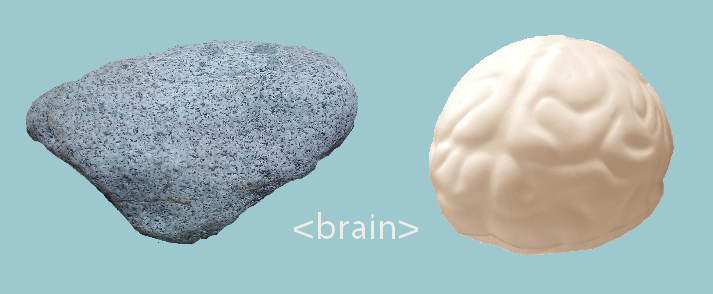 Our primitive brains establish patterns that for the most part keep us safe and out of trouble. This has kept our ancestors out of the jaws of wild beasts. This is also what happens when you apply your vehicle brakes when it looks like the speeding car is going to plow through the intersection and smash into you. You see the pattern and act accordingly. Our brain creates and recognizes patterns, those that give us the feeling that we’ve been there before, even if we’ve only imagined it, seen it on television, or heard it from another. But these patterns can limit our openness to new possibilities.
Our primitive brains establish patterns that for the most part keep us safe and out of trouble. This has kept our ancestors out of the jaws of wild beasts. This is also what happens when you apply your vehicle brakes when it looks like the speeding car is going to plow through the intersection and smash into you. You see the pattern and act accordingly. Our brain creates and recognizes patterns, those that give us the feeling that we’ve been there before, even if we’ve only imagined it, seen it on television, or heard it from another. But these patterns can limit our openness to new possibilities.
“… corporations becomes stuck in mediocrity, churning out unremarkable innovative products and services.”
We similarly recognize patterns in the conference or board room. Corporate cultures and environments erect invisible barriers and act as anchors in the sand when it comes to advancing new ideas. If a new idea doesn’t fit an existing pattern – then it is dismissed, filtered out, or subjected to the corners of the parking lot where it will be ignored and forgotten. It turns out that workers are conditioned to recognize this pattern and tend toward advancing safe, in bounds, ideas that are more likely to be embraced. More radical thinkers leave for more innovative pastures and the corporation becomes stuck in mediocrity, churning out unremarkable “innovative” products and services. The environment becomes safe for those that play the game, but that game isn’t game changing as people don’t ask the tough questions, or have conversations that break through boundaries and explore new territories.
“Biases held by individuals and entire departments become woven into the innovation fabric of the enterprise.”
Though patterns are codified into the DNA of an organization they also reside in individuals. Schooling, past experiences, beliefs, and values all shape the biases we bring to work each day. Biases held by individuals and entire departments become woven into the innovation fabric of the enterprise. One classic and common bias is financial. “What is the business case?” “What is the expected ROI?” “Is this a big enough business to matter?” These biases for immediate results or large returns squash budding ideas that really could be the next big thing if nurtured. Smart people everywhere are upholding these biases and unable to move forward. They are stuck in their own thinking, much like a trained elephant is tethered to the ground with only a small chain and spike that it could easily break free from.
Some of the smartest, most vocal people are often the most rewarded and also the most dangerous. These gator brain, knee jerk reactors immediately quell the thing that threatens them, or worse they simply fail to give it notice. You might recognize them as being the vocal devil’s advocate in meetings telling colleagues why they are wrong or why things will not work. They are also the “could be” champions of a new initiative as they carry political weight in their organizations for their astute assessment of past situations. Gator brains are the people that squelch the voices of others inside or outside of the organization.
“Remarkable innovation happens outside of established patterns.”
Remarkable innovation happens outside of established patterns. Guy Kawasaki would refer to this as next-curve thinking, Seth Godin would say you have to go to an edge. The key is to reframe, to break the established pattern that traps your thinking and ability to be creative. You have to enable people to break free of their biases and give them capacity to take risks and be creative beyond their reactive gator brain thinking. When you finally do all of this your Innovation culture will sing and the stakeholders they serve will listen with joy.
In the next issue of the What’s Next newsletter we’ll share a free and simple exercise that enables you to detect pattern thinking in yourself as well as others.
Signup for the What’s Next newsletter

